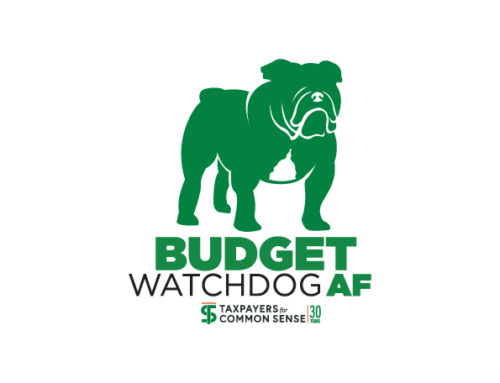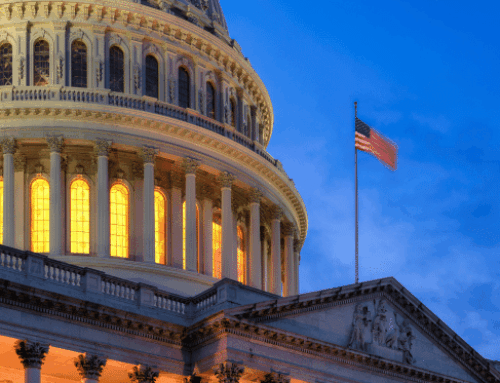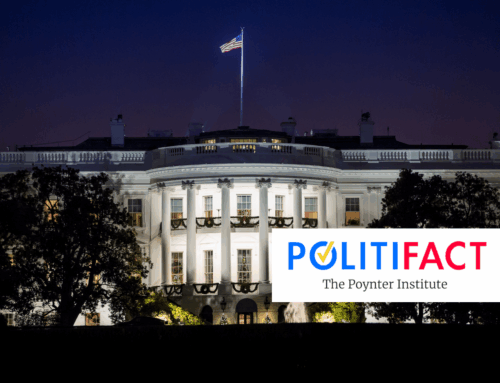Last Friday, while you were anxiously awaiting the Weekly Wastebasket, the Trump Administration released its “Skinny” Budget Request for fiscal year 2026.
What’s a skinny budget? So glad you asked.
In the first year of a new administration, the President submits a much shorter budget request than normal. That gives lawmakers a sense of what the administration will be proposing once they’ve had time to complete the full budget request. The difference is 45 pages of tables versus thousands of pages of details. But even without the fine print, you can glean a few things that are going to be in the final budget request.
For instance, in the letter transmitting the proposal, the Administration boasts of a $163 billion—or 22.6%, by their calculation—cut to non-defense discretionary spending compared to fiscal year 2025 levels. Furthermore, the letter also touts an “historic” $175 billion investment in border security and another $150 billion in defense totaling a $325 billion increase, which the Administration expects to be provided through the FY2025 reconciliation package.
As Weekly Wastebasket readers know, TCS is all for thoughtful, targeted spending cuts. The country does have a more than $36 trillion debt after all. But the cuts should be reasoned and well-supported, otherwise, they won’t stick with lawmakers and the public. And cuts need to actually be cuts. This $325 billion will be spread over 10 years (FY2025-2034), and the administration expects the reconciliation bill to allocate $163 billion of these funds for FY2026 alone, an increase that matches the same amount as the promised cuts.
The budget’s call for new spending on the border wall revives a fiscally flawed idea that Taxpayers for Common Sense has long opposed. As we wrote in The Hill back in 2018, the wall is “a political placebo,” not a serious national security investment. With hundreds of miles of fencing already in place and no clear metrics to evaluate whether it’s effective, throwing billions more at construction—especially through the Pentagon or reconciliation—represents waste layered on top of existing waste. Most undocumented immigration stems from visa overstays, not illegal crossings in remote areas. If Congress is serious about border security, it should invest in data-driven strategies and proven technology.
Many of the proposed cuts were telegraphed in advance. If a program or agency was already a target of the U.S. Department of Government Efficiency Service (DOGE), it got the axe in this budget. The State Department and U.S. Agency for International Development were hit with more than $28 billion in cuts, partially offset by nearly $6 billion for two programs focused on “strategic investments” and overseas loans. Similarly deep cuts are proposed for the Department of Education, Centers for Disease Control, and Health and Human Services.
The skinny budget calls for a $646 million cut to FEMA’s non-disaster grant programs, eliminating key funding streams that help communities prepare for future disasters. That includes grants for emergency planning, public safety training, and pre-disaster hazard mitigation—investments that have consistently delivered strong returns by reducing future disaster costs. The administration is once again arguing that these responsibilities should be handled at the state level. That may sound appealing in theory, but decades of disaster response suggest otherwise: when major floods, fires, or hurricanes hit, federal involvement is not optional—it’s inevitable. Public and political pressure for federal aid comes fast and loud, regardless of who was supposed to be “in charge.” Gutting pre-disaster mitigation only guarantees that when the federal government does step in, it will be reacting to costlier, more destructive events. Yes, states must play a bigger role in building resilience—but that shift must be deliberate and supported, not abrupt and unfunded.
Another proposal in the budget request is the consolidation of wildfire management resources. Currently, these responsibilities are divided between U.S. Forest Service (USFS) within U.S. Department of Agriculture (USDA) and multiple agencies within the Department of the Interior (DOI). The proposal would merge them into a single agency within DOI, dubbed Federal Wildland Fire Service. We’ve repeatedly pointed out that scattering wildfire spending across agencies makes it difficult to track total spending or identify specific types of spending like prescribed fires or similar programs. But since USFS manages roughly 75 percent of the nation’s wildfire resources, transferring its responsibilities to DOI—while simultaneously cutting core USFS operations and personnel—would severely undermine our federal wildfire mitigation capacity and leave communities and taxpayers more exposed to increasingly destructive and costly wildfires. The administration argues the cuts would “empower” states to fund their own preparedness and mitigation efforts, but wildfire doesn’t respect federal, state, or private property boundaries. Pulling back federal support abruptly, with no backstop, simply puts communities at greater risk.
This theme—shifting responsibility to states and localities—runs throughout the budget. There’s even a fact sheet on it: Revitalizing Federalism. It touts transferring programs in Education, Housing, EPA, Health, and FEMA to state control, with the rationale that they are better performed at the local level.
You’ll notice we keep referring to the document as a budget request. Because that’s what it is: the administration’s wish list, telling Congress how it would like (and not like) to spend funds in the next fiscal year. Congress decides the actual funding levels—what gets cut, and what gets boosted. And clearly, some of these cuts won’t fly, even with Republican majorities in both chambers. Lawmakers are already grumbling—some even growling—about the budget request. But it’s not the cuts as much as the adds.
That’s right—as we previously mentioned, the budget adds funding for the Pentagon and border security; it also increases funding for other parts of Homeland Security and Transportation among a few other areas. How much it adds is where the controversy starts.
In the lead up to the budget’s release, the White House tipped their hand and said that it would request $1 trillion for the Pentagon—a significant boost from the current $848 billion. But what they didn’t say was that $113 billion of that “increase” would come from funding already being debated as part of the Fiscal Year 2025 budget reconciliation package. Oh, and it’s not $1 trillion just for the Pentagon—it’s for all defense spending, including nuclear weapons programs at the Department of Energy. Actual Pentagon spending clocks in at $961 billion—coincidentally, exactly $113 billion over current-year funding. So, in a way, that’s a small win: it’s not quite as fiscally reckless as initially advertised. That said, some key lawmakers are crying foul and may still get a boost for the only government agency that has never passed an audit.
We will be anxiously awaiting the full budget release. That’s when the real details will emerge—especially around entitlement programs like Social Security and Medicare, and any revenue proposals. But this skinny budget is just the opening salvo in what’s sure to be a long budget battle.
- By David Goehring from New York, NY, USA - Hippo Indigestion, CC BY 2.0, https://commons.wikimedia.org/w/index.php?curid=7289142








